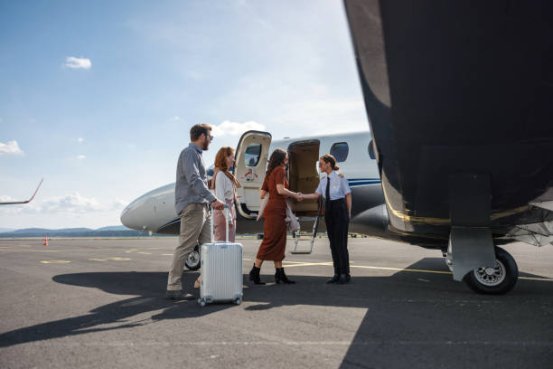The True Cost of Private Jet Travel: Key Considerations
Private jets offer unmatched luxury and flexibility, but understanding the factors that influence pricing is essential for making informed travel decisions.
Private jets offer unmatched luxury and flexibility, but understanding the factors that influence pricing is essential for making informed travel decisions.

What Is a Private Jet?
Private jets are aircraft designed for exclusive use by individuals, families, or small groups. Unlike commercial flights, they offer flexible departure times, customizable destinations, and premium onboard amenities. Jet types range from small, short-range planes to large long-range aircraft capable of intercontinental travel.
Types of Private Jets
| Jet Type | Passenger Capacity | Range (Miles) | Typical Use |
| Light Jets | 4-8 | 1,500-2,000 | Short-haul flights |
| Midsize Jets | 6-10 | 2,000-3,000 | Regional travel |
| Super Midsize Jets | 8-12 | 3,000-4,000 | Cross-country or transcontinental |
| Heavy Jets | 10-18 | 4,000-7,000 | Long-haul, international |
Source: National Business Aviation Association (NBAA)
Fuel Costs and Their Impact
Fuel is a major driver of private jet costs. Prices fluctuate with global oil markets, geopolitics, and seasonal demand. Larger jets consume more fuel—for instance, light jets burn roughly 134 gallons per hour, while heavy jets can exceed 500 gallons. With 2023 average jet fuel prices around $6 per gallon, fuel alone can add thousands to a single flight.
Seasonality and Pricing
Private jet rates vary by season. High-demand periods like holidays and summer travel often increase costs by 20-30%, while off-peak months like January or September can provide savings.
Aircraft Type and Cost
The choice of jet affects pricing due to size, range, and onboard features.
Considerations:
-
Passenger Count: Larger groups may need midsize or heavy jets.
-
Flight Distance: Long-haul trips require jets with extended range.
-
Amenities: Wi-Fi, catering, and entertainment increase costs.
Additional Fees
Beyond base rates, other charges can impact total costs:
-
Landing Fees: Charged by airports based on aircraft weight and location.
-
Crew Costs: Include accommodations for multi-day trips.
-
De-icing Fees: Winter operations may add significant expense.
Membership Programs
Frequent flyers may benefit from:
-
Jet Cards: Prepaid hours at fixed rates.
-
Fractional Ownership: Shared aircraft ownership with annual flight hours.
These programs reduce costs for regular travelers but may not suit occasional flyers due to high upfront investment.
Market Competition
A competitive private aviation market can influence prices:
-
Dynamic Pricing: Rates adjust based on demand and competitor pricing.
-
Promotions: Discounts are often offered during off-peak periods.
Tips for Saving on Private Jet Travel
-
Book Early: Secure flights in advance for better rates.
-
Empty Leg Flights: Take advantage of discounted repositioning flights.
-
Travel Off-Peak: Avoid high-demand periods to lower costs.
Frequently Asked Questions
Q1: How much does a private jet cost per hour?
Typically $2,000–$10,000 depending on jet type and route.
Q2: Are private jets eco-friendly?
They have a higher carbon footprint per passenger, though some operators offer offsets.
Q3: Can pets travel on private jets?
Yes, but check individual operator policies in advance.
Q4: What is an empty leg flight?
A discounted one-way flight when the aircraft needs to return to its base.
Q5: Are security checks required?
Yes, but procedures are faster and less invasive than commercial airports
This article is based on publicly available information as of 2023. Prices, policies, and other details vary by operator and region. Verify directly with private jet providers before making decisions.
References
National Business Aviation Association (NBAA)
Federal Aviation Administration (FAA)
